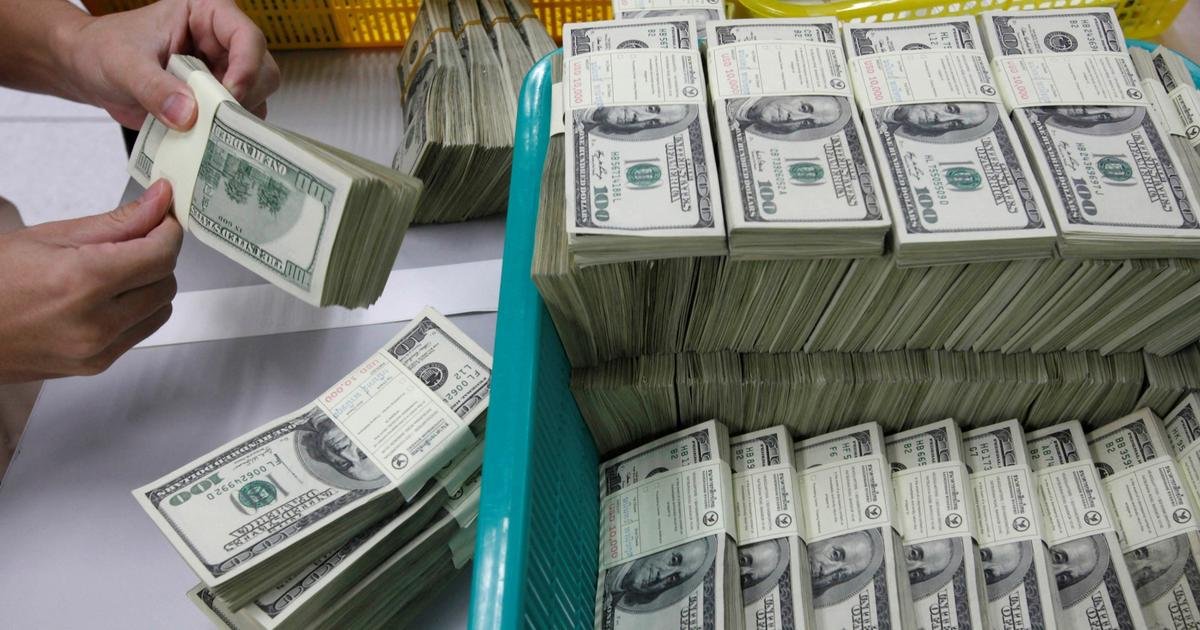- The US Dollar erases earlier losses and heads back to flat.
- The technical picture raises a worrying sign for the coming weeks.
- The US Dollar index closed above a key level on Thursday.
The US Dollar (USD) started on the back foot again on Friday and has been able to erase earlier incurred losses towards the US opening bell this Friday. As such, there is no issue, seeing that the US Dollar Index has been able to print three consecutive days of gains. The effect of the lower-than-expected Initial Jobless Claims print from Thursday is quickly fading, and with an empty calendar ahead, it could be a day of more outflow for the US Dollar ahead of the weekend.
On the economic data front, there is an empty calendar ahead with no data points that will move markets or the US Dollar. This means that either headlines or geopolitical events will drive markets to close the week. The weekly close for the US Dollar will be vital ahead of next week when the US Consumer Price Index (CPI) and the US Retail Sales data for July are on the docket.
Daily digest market movers: Another 180 flip?
- A slew of US Federal Reserve (Fed) members left a few comments overnight in terms of where they see the Fed policy at the moment:
- President of the Federal Reserve Bank of Chicago Austan Goolsbee said that the Fed is watching markets, though that does not influence the Fed’s policy. Goolsbee also expressed his unease that the Fed would cut so close to US elections.
- Kansas City Fed President Jeffrey Schmid said that it is appropriate to cut when inflation continues to come in low. Schmid also noted that the job market is still in very good shape.
- China’s data this week remained very disappointing after imports surpassed exports, making the Chinese main exporter suddenly an importer for the month of July. More concerns are now at hand, with Consumer Prices rising 0.5% against July last year. The People’s Bank of China (PBoC) might be forced to raise rates in order to tame inflation, while it wants to keep rates low or even lower in order to boost exports.
- Equity markets look a bit two-faced on Friday, with Asian stocks set to close in positive territory, while European indices and US futures are mildly negative.
- The CME Fedwatch Tool shows a 54.5% chance of a 50 basis points (bps) interest rate cut by the Federal Reserve (Fed) in September against a 45.5% chance for only 25 bps. Another 25 bps cut (if September is a 50 bps cut) is expected in November by 51.9%, while a 15.8% chance for a 50 bps cut and 32.3% for no cut are being pencilled in for that meeting.
- The US 10-year benchmark rate trades at 3.97% after popping above 4.00% briefly on Thursday.
US Dollar Index Technical Analysis: How many times more?
The US Dollar Index (DXY) faces pressure near the pivotal level of 103.18 after closing above it for the first time this week on Thursday. Thus, Friday’s close will be even more important as there could be more downside in the cards towards next week.
Still the first level to recover, which gains importance every day, is 103.18, a level held on Friday last week though snapped on Monday this week in the Asian hours.. Once the DXY closes above that level, next up is 104.00, which was the support from June. If the DXY can make its way back above that level, the 200-day Simple Moving Average (SMA) at 104.17 is the next resistance level to look out for.
On the downside, the oversold condition in the Relative Strength Index (RSI) indicator has eased in the daily chart and holds room again for a small leg lower. Support nearby is the March 8 low at 102.35. Once through there, pressure will start to build on 102.00 as a big psychological figure before testing 101.90, which was a pivotal level in December 2023 and January 2024.
US Dollar Index: Daily Chart
Risk sentiment FAQs
In the world of financial jargon the two widely used terms “risk-on” and “risk off” refer to the level of risk that investors are willing to stomach during the period referenced. In a “risk-on” market, investors are optimistic about the future and more willing to buy risky assets. In a “risk-off” market investors start to ‘play it safe’ because they are worried about the future, and therefore buy less risky assets that are more certain of bringing a return, even if it is relatively modest.
Typically, during periods of “risk-on”, stock markets will rise, most commodities – except Gold – will also gain in value, since they benefit from a positive growth outlook. The currencies of nations that are heavy commodity exporters strengthen because of increased demand, and Cryptocurrencies rise. In a “risk-off” market, Bonds go up – especially major government Bonds – Gold shines, and safe-haven currencies such as the Japanese Yen, Swiss Franc and US Dollar all benefit.
The Australian Dollar (AUD), the Canadian Dollar (CAD), the New Zealand Dollar (NZD) and minor FX like the Ruble (RUB) and the South African Rand (ZAR), all tend to rise in markets that are “risk-on”. This is because the economies of these currencies are heavily reliant on commodity exports for growth, and commodities tend to rise in price during risk-on periods. This is because investors foresee greater demand for raw materials in the future due to heightened economic activity.
The major currencies that tend to rise during periods of “risk-off” are the US Dollar (USD), the Japanese Yen (JPY) and the Swiss Franc (CHF). The US Dollar, because it is the world’s reserve currency, and because in times of crisis investors buy US government debt, which is seen as safe because the largest economy in the world is unlikely to default. The Yen, from increased demand for Japanese government bonds, because a high proportion are held by domestic investors who are unlikely to dump them – even in a crisis. The Swiss Franc, because strict Swiss banking laws offer investors enhanced capital protection.








